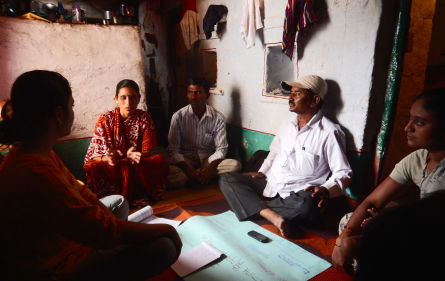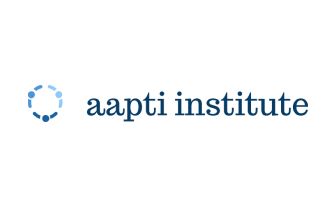In an increasingly digital world, there is a rising need to address the gaps in access between those who have digital infrastructure and literacy, and those who do not. Deploying digital solutions for both public and private processes without acknowledging the realities of those it seeks to serve further deepens existing disparities in access and erodes the gains of technology.
Offline architectures are a set of people, processes, and mechanisms that sit between powerful institutions and human beneficiaries, to bridge gaps in capacity, build access to services, and build participatory and inclusive governance. They exist alongside often digitised processes and delivery of services.

Our last mile research pointed us towards breakdowns for access and the need for offline architectures in building the gap.
Build trust
Offline architectures such as human intermediaries help build trust in institutions for those at the last-mile.
Contribute contextual knowledge
Offline architectures understand the capacity breakdowns and build the ability and agency for those who need it.
Our research on platform governance pointed us towards the need for including offline architectures to account for governance failures.
Build accountability in technology deployment
Offline architectures should play significant and formal roles in governance in digital architectures serving society, thus enabling accountability
Empower agency
Offline architectures are important for amplifying key interactions to enhance agency to collaborate with digital architectures.
Through research, testing, and dialogue we build ways to learn from human and analog mechanisms or offline architectures that support equitable digital access for the most vulnerable pockets of society.
360 embedded field research to understand breakdowns in technology
Brews, roundtables, hackathons and challenges
Surveys, participant observations, experience tracking
Toolkits, Operating / How to manual
Invest capital and resources in ideas that can scale
Population scaled legacy and legal frameworks
We researched about problem-led mix of fieldwork & desk-based work and decided to orient ourselves towards solution-generation and testing.
Findings from specific contexts to relevant line ministries at the State and Central levels
Horizontal thinking on access - systematize process and approach - embed in government
Think and do-kits, aggregate findings and solutions across contexts
Over time, channel philanthropic and impact investment capital to inclusive, responsible technologies.

Aapti is a public strategic research institution that generates policy-relevant, actionable, and accessible knowledge from the frontiers of tech and society, about our networked lives, to support the creation of a fair, free, and equitable society.